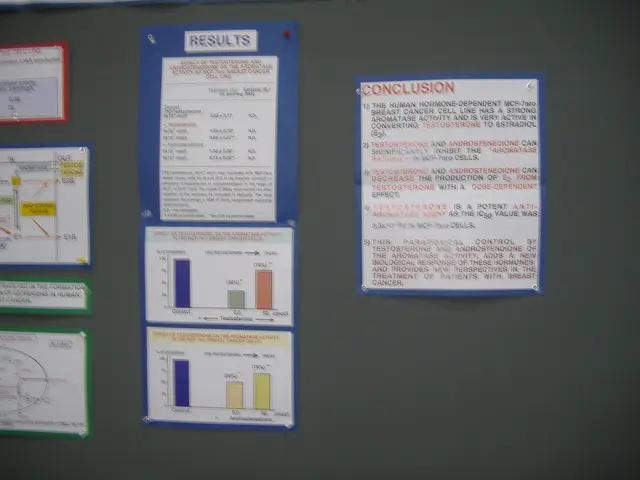Cybersecurity advancements: Insights from the corporate world
In the ever-evolving landscape of cybersecurity, the focus for 2025 is on a multi-layered, AI-augmented, and human-centric approach. This strategy aims to outpace the growing threats such as AI-enhanced malware, ransomware with double extortion, and supply chain vulnerabilities.
Integrating AI-driven security tools is a key component of this approach. These tools provide real-time threat detection, predictive analytics, and automated incident responses, enabling organisations to stay ahead of the curve.
Implementing Zero-Trust security frameworks is another crucial strategy. This approach requires continuous verification of all users and devices, minimising implicit trust and protecting expanded attack surfaces such as remote work and IoT environments.
Regular, organisation-wide cybersecurity training and phishing simulations are essential to reduce the human risk factor, which remains the primary vulnerability in many breaches. Training all staff, from entry-level employees to executives, and reinforcing good security hygiene practices are vital in this regard.
Enforcing multi-factor authentication (MFA) and eliminating default or weak passwords are steps to strengthen access control mechanisms and reduce unauthorised access risks.
Continuously monitoring systems and conducting threat hunting using automation and AI-powered tools is also crucial. This helps identify anomalies and respond rapidly to incidents before damage occurs.
Adopting secure remote access solutions with encryption and centralised monitoring is necessary to safeguard remote workforces and sensitive data transmission.
Establishing explicit, documented cybersecurity policies that guide behaviour, audits, and consistent training across the organisation is essential for clarity and enforcement of security goals.
Building organisational resilience through comprehensive incident response plans, data governance, and collaboration with external partners and law enforcement is vital to manage evolving threats and compliance challenges effectively.
Addressing the cybersecurity skills gap by leveraging automation and AI is necessary given the projected shortage of skilled professionals. This approach maintains effective defense capabilities.
Granular file access controls can prevent data exfiltration and mass encryption attempts. Multi-factor authentication (MFA) is critical for all remote accounts, including Microsoft 365, Google Workspace, domain registrars, and remote access tools.
RingfencingTM prevents apps like Microsoft Word from launching other programs, and removing local administrator rights limits what attackers can do, even if they manage to compromise a password. Application Allowlisting blocks all software by default and allows only explicitly approved programs.
Disabling SMBv1 reduces attack surfaces, and controlling RDP and SMB ports can help reduce the risk of ransomware attacks. Blocking most outbound internet access from servers prevents payload downloads.
The World Bank projects that the cost of global cybercrime will rise to $10.5 trillion for 2025. However, with these proactive strategies in place, organisations can better protect themselves against these growing threats.
In summary, the current industry consensus and most recent studies highlight that successful cybersecurity prevention in 2025 depends on fusing advanced AI technologies, rigorous access controls like Zero Trust, continuous employee education, and organisational preparedness through clear policies and incident response.
Read also:
- Increased tariffs resulting in higher prices at Shein and other Chinese fast-fashion retailers
- Airport in the U.S. Contemplates Nuclear Energy, Sparks Swift Opposition
- Southeast Asia's initial AI-linked battery-swapping station was launched by U Power
- Artificial Intelligence with independent agency could potentially intervene in cybercrises.







